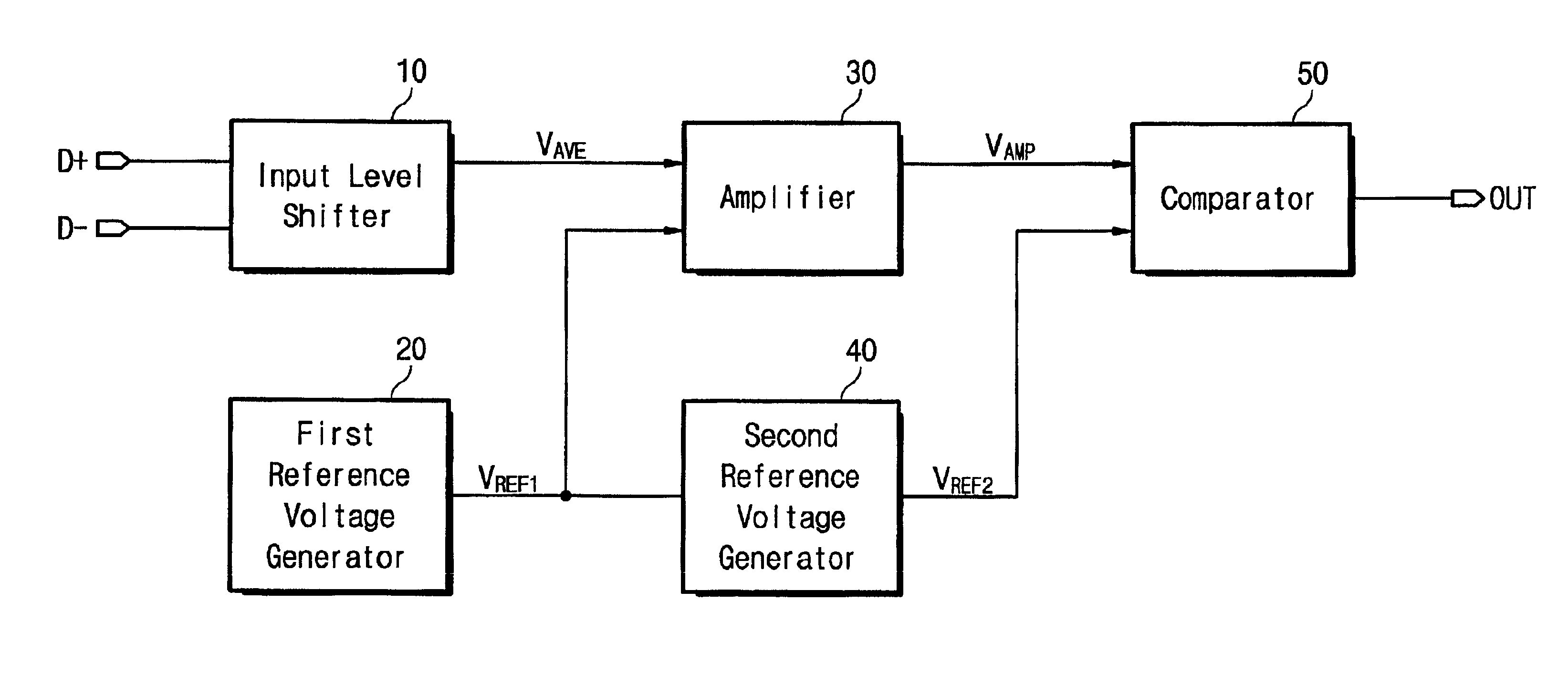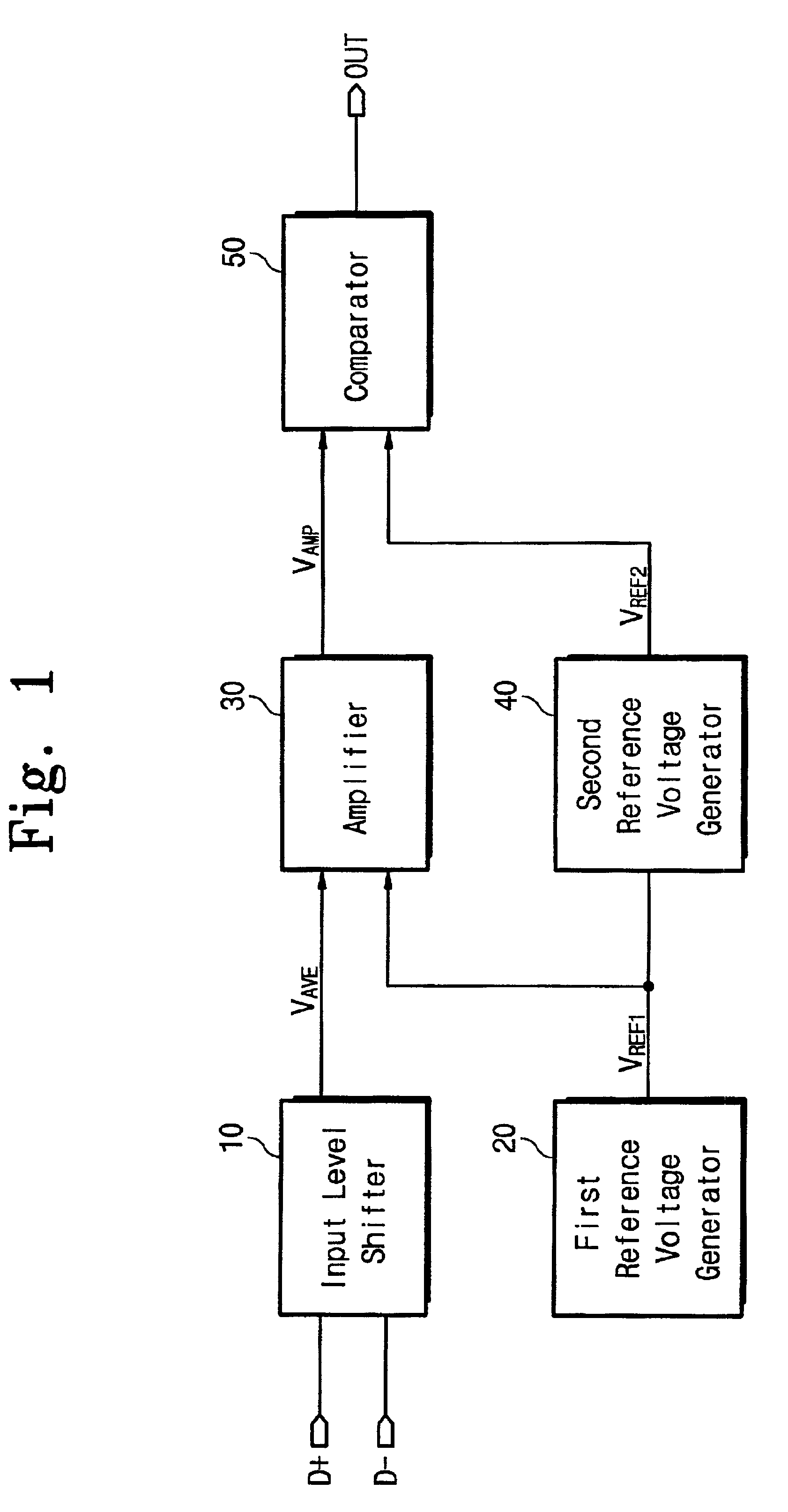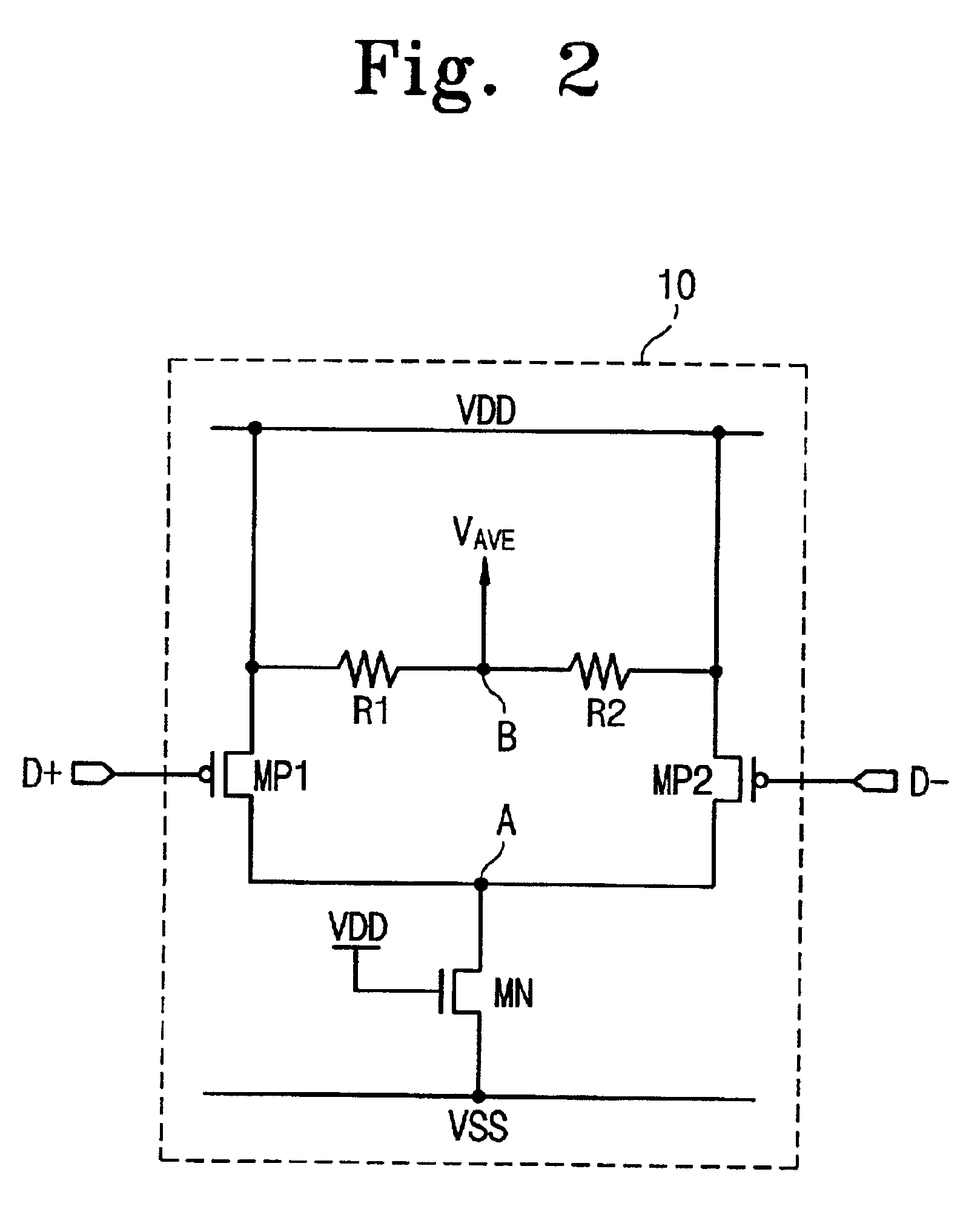Squelch detection circuit
a detection circuit and squelch technology, applied in the field of circuits, can solve the problems of inability to detect whether the transmitting data is a noise element, the peripheral equipment of personal computers or workstations is noticeably changing, and the conventional squelch detection circuit employing the foregoing comparator cannot. achieve the effect of convenient us
- Summary
- Abstract
- Description
- Claims
- Application Information
AI Technical Summary
Benefits of technology
Problems solved by technology
Method used
Image
Examples
Embodiment Construction
The following detailed description is of the best modes presently contemplated by the inventors for practicing the invention. It should be understood that the description of these preferred embodiments is merely illustrative and that they should not be taken in a limiting sense.
A squelch detection circuit of the present invention detects data elements (noise or signal) being transmitted through a cable bus and provides the result for receiver to transmitter. The squelch detection circuit of the invention detects whether the transmitting data is a noise element or a signal element even at a cross point.
FIG. 1 is a block diagram of the squelch detection circuit according to an embodiment of the present invention. Referring to FIG. 1, the squelch detection circuit includes an input level shifter 10 generating an average voltage VAVE in response to a data signal through two signal lines D+ and D−. A first reference voltage generator 20 generates a first reference voltage VREF1 in respon...
PUM
 Login to View More
Login to View More Abstract
Description
Claims
Application Information
 Login to View More
Login to View More - R&D
- Intellectual Property
- Life Sciences
- Materials
- Tech Scout
- Unparalleled Data Quality
- Higher Quality Content
- 60% Fewer Hallucinations
Browse by: Latest US Patents, China's latest patents, Technical Efficacy Thesaurus, Application Domain, Technology Topic, Popular Technical Reports.
© 2025 PatSnap. All rights reserved.Legal|Privacy policy|Modern Slavery Act Transparency Statement|Sitemap|About US| Contact US: help@patsnap.com



